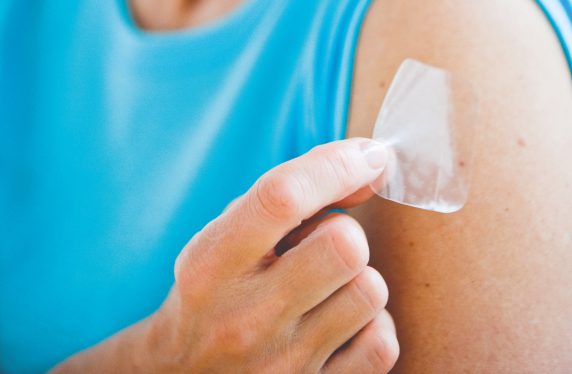What you should already know
Migraine is the third most common chronic disease in the world, affecting an estimated one in seven people. Migraine affects two to three times more women than men, and the difference is mostly hormonally driven. In the UK approximately 25 million days are lost each year from work or school because of migraines.1
From menarche through to perimenopause, many women will experience migraines at predictable times in their menstrual cycle (most commonly starting two days before menstruation and lasting five days). The mechanism is the late luteal drop in oestrogen.2
Similarly, for women taking the CHC the worst day for migraine tends to coincide with oestrogen withdrawal on the third day of the pill-free interval.
Peak migraine prevalence occurs in women in their 40s. As hormonal fluctuations, particularly in oestrogen levels, become more marked and erratic around the perimenopause, it is very common for migraines to worsen. Further aggravation of episodes can be brought about by other perimenopausal features, typically vasomotor symptoms, poor sleep and mood swings. Following a natural menopause, the frequency of migraines generally reduces with time as hormonal triggers settle. However, for some women this phase can take many years or even decades. Following a surgical menopause, migraine prevalence initially worsens but generally settles again after few years.
During reproductive years, contraception that suppresses ovarian activity can help with reducing the impact of ‘menstrual migraines’, such as CHC (low dose, extended cycle is most suitable) or desogestrel-containing POP. Of course, this may be contraindicated in some women because of the increased risk of ischaemic stroke (two-fold) in those who have migraine with aura (UKMEC 4).3
What isn’t as widely known, but you should consider
In a menopause clinic it has been estimated that 57% of woman complain of headaches and 29% are thought to have migraines.4
The pattern of migraine without aura (accounting for 70-90% of all migraines) appears to be heavily influenced by hormones, particularly the concept of ‘menstrual migraine’ associated with oestrogen withdrawal. For this reason, migraine without aura tends to worsen around the perimenopause.5
Migraine with aura (10-30% of all migraines), in contrast, is often associated with states of hyperoestrogenism such as pregnancy, COCP or HRT use.
Transdermal patches with oestrogen can be effective in decreasing migraine attack frequency in perimenopausal and postmenopausal women, and are more effective than oral contraceptives.5
Gels and patches containing oestradiol are preferable over oral preparations as blood hormone levels are kept stable. They should be taken continuously without omission to prevent rapid changes in oestrogen blood levels, which can trigger migraines.
It is not uncommon for women and clinicians to extrapolate the precautions for CHC to the use of HRT. However, there are important differences between the CHC and HRT. Put simply, CHC is high dose and synthetic (ethinyloestradiol), whereas HRT is lower dose and naturally occurring (17 ß-oestradiol). Therefore, migraines, whether with or without aura, are not a contraindication to HRT. Transdermal oestrogen does not increase the risk of ischaemic stroke and therefore should be used first line for most women, including those with migraines.6
Practical points
- For a woman presenting with worsening of migraine, ask about her periods and any other symptoms (mood swings, hot sweats and flushes) that may indicate the perimenopause.
- Reassure women that migraine is not a contraindication to using HRT if the oestrogen is given either as a patch or gel – in fact for those who have migraine without aura, HRT is likely to help reduce migrainous episodes.
- Aim to use transdermal oestrogen, as patches or gel. This provides more stable hormone levels. Start at a low dose and increase the dose very gradually.
- If progestogen is required, aim to use a continuous regime where possible. A levonorgestrel IUS is ideal in the perimenopause or post menopause or micronised progesterone (one capsule every evening) in the post menopause.
- Vaginal oestrogen preparations are associated with very little systemic absorption but in the first few days during the initial rise in hormone levels, as for systemic HRT, susceptible individuals may experience a flare in their migraines.
- If aura does develop while taking HRT, exclude TIA and other causes of headache. Alter the oestrogen delivery to transdermal if the woman is not using this already or consider changing the oestrogen dose.
- If HRT is contraindicated (e.g. in hormone-sensitive cancers) or is not tolerated, evidence exists for trials of venlafaxine or escitalopram for control of vasomotor symptoms and migraines.7
Dr Sarah Ball is a GP with a special interest in menopause in the West Midlands and Stratford-upon-Avon. Dr Louise Newson is a GP and menopause specialist in Stratford-upon-Avon. She is also a director of the Primary Care Women’s Health Forum.
Pulse October survey
Take our July 2025 survey to potentially win £1.000 worth of tokens













